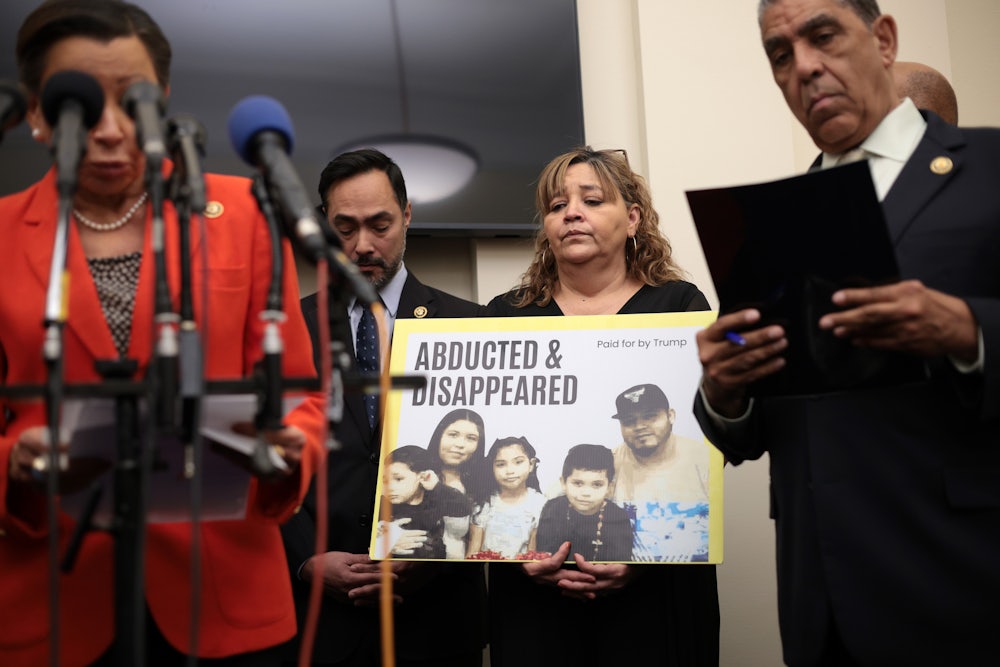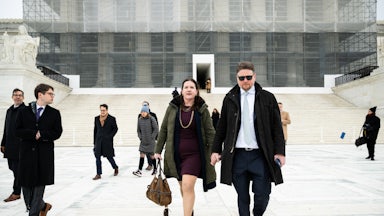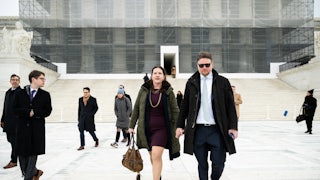The recent Supreme Court ruling on President Donald Trump’s use of the 1798 Alien Enemies Act nodded to the importance of due process in American jurisprudencce. In their opinion finding that the Trump administration could resume removal of Venezuelans with alleged gang ties under the Alien Enemies Act, the U.S. Supreme Court nonetheless also ruled 9–0 that it could only remove Venezuelan detainees with alleged gang ties under the Alien Enemies Act after they received advance notice and a court hearing.
While the justices affirmed that the detainees could seek judicial review, the court held 5–4 that they must contest their deportations individually by filing habeas petitions in the jurisdiction where they are held, not through a nationwide injunction at a D.C. federal court.
“The detainees are confined in Texas, so venue is improper in the District of Columbia,” the unsigned majority opinion said, adding that the Trump administration would likely succeed in its efforts to deport these individuals “as a result.” Still, the court held that the detainees were entitled to receive notice of their pending deportation and “afforded within a reasonable time and in such a manner as will allow them to actually seek habeas relief in the proper venue before such removal occurs.” This part of the ruling was characterized by some as an impediment to the Trump administration’s deportation plan and a small victory for the migrants targeted by it.
But legal experts warn that the path toward exercising their legal rights is by no means an easy one: Migrants caught up in these deportation dragnets will need to overcome a series of hurdles to file a habeas petition, potentially putting the ability to challenge their deportations out of reach.
“It’s a right on paper, but it’s not a right in practice,” said Luis Cortes Romero, an immigration lawyer based in Washington state.
Essentially, a habeas petition allows an individual to contest their detention as illegal in federal court and then have a judge determine whether that challenge is legitimate. But detained migrants are not automatically guaranteed the right to attorneys, meaning that they may need to file a petition on their own behalf, a complex procedure for anyone but particularly someone for whom English may be a second language.
“We’re not talking about a form that you can just pull up easily when you’re in a detention center, fill out, and mail in an easy way,” said Jennifer Ibañez Whitlock, senior policy counsel at the National Immigration Law Center. “I’ve seen cases get bounced back from the clerk because you forgot to page-number something, or you didn’t properly tag something. That’s why the idea that somebody without counsel sitting in a Louisiana detention center is going to be able to assert their rights and protect themselves is just not based in reality of what it’s like to be a detained immigrant.”
Many detention centers are in remote locations, where there may not be an abundance of immigration attorneys who are experienced with filing such petitions. Then there are the conditions within a detention center to consider: For example, in the Northwest ICE Processing Center in Washington state, Cortes Romero said, phone calls are limited to seven minutes, which means that detainees would only be able to communicate with attorneys in brief increments.
Once the actual hurdle of filing a habeas petition is met, the process for adjudicating it is time-consuming. If a habeas petition is filed with a district court judge, it will often first go before a magistrate judge, a judicial officer who manages procedural matters. The magistrate judge will then issue a “report and recommendation” advising the district judge how to respond to the petition. The petition filer and the government can file their own arguments reacting to the magistrate’s recommendation, and the district judge will make a final decision.
“What is notable about these habeas petitions is that there is no real mechanism to hold an evidentiary hearing,” said Cortes Romero. “So what is difficult in these cases is that the government is alleging that these are gang members—or Tren De Aragua–affiliated somehow or in some way, shape or form—and now it’s up to the noncitizen, the detainee, to prove a negative.”
Filing a habeas petition is also an added stress for immigration attorneys who may already be overworked. “The idea that they can drop every other case and immediately file in federal court—even the most dedicated attorney is going to struggle under those conditions,” said Ibañez Whitlock.
In the days since the Supreme Court’s ruling, district judges have acted quickly to respond to habeas petitions. This week, judges in Texas and New York blocked the deportations of Venezuelan men alleged by the Trump administration to be connected to the Tren de Aragua gang. In Manhattan, a district judge temporarily blocked the deportation of two Venezuelan men currently held in Orange County, New York. The case in Texas had been brought on behalf of the men who had initially challenged their deportation in district court in Washington, D.C., who had been ordered to re-file their habeas petitions in the jurisdiction where they were being held.
In Texas, District Judge Fernando Rodriguez Jr., appointed by Trump during his first term, temporarily blocked the administration from removing the three Venezuelan men from the El Valle Detention Center, as well as any other individual subject to deportation under Trump’s order to remove Venezuelans with alleged ties to Tren de Aragua. Rodriguez wrote in his order that if these Venezuelans were deported, it would “cause immediate and irreparable injury to the removed individuals, as they would be unable to seek habeas relief.”
Doris Meissner, a senior fellow at the Migration Policy Institute, said that filing a habeas petition embodies the “ultimate core right” to due process. “The fact that the court rulings now from the Supreme Court and working their way up through the system are allowing for, or let’s say reaffirming and validating, that basic right, is certainly important, because some of the actions the Trump administration have been taking have been done in a way that doesn’t take that into account,” said Meissner.
But it’s unclear what the Supreme Court’s ruling means for the hundreds of Venezuelan men already deported to a megaprison in El Salvador. The Trump administration had resisted judicial orders to return a mistakenly deported man to the U.S., arguing that it could not force the Salvadoran government to release him. The Supreme Court on Thursday ordered the administration to “facilitate” the return of Kilmar Armando Abrego Garcia, whose deportation a Justice Department attorney conceded was due to an “administrative error.”
The Justice Department on Friday defied the order by a district court judge to explain how it planned to bring back Abrego Garcia by that morning, arguing that “defendants are unable to provide the information requested by the court on the impracticable deadline set by the court hours after the Supreme Court issued its order.”
How the process with Abrego Garcia plays out—with, perhaps, an ultimate ruling by the Supreme Court on whether the U.S. government is required to return wrongfully deported individuals—will help determine whether already-deported individuals could file habeas petitions.
“If, ultimately, they’re not considered in U.S. custody and they’re outside of the U.S.’s control, and that’s how the courts rule … then there might not be recourse,” said Cortes Romero.










